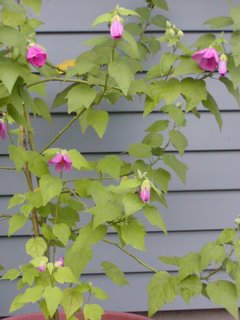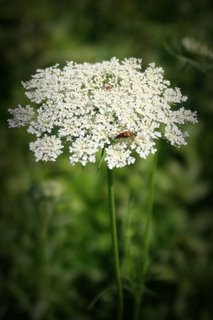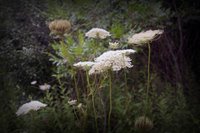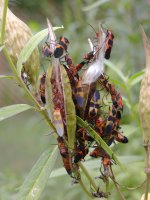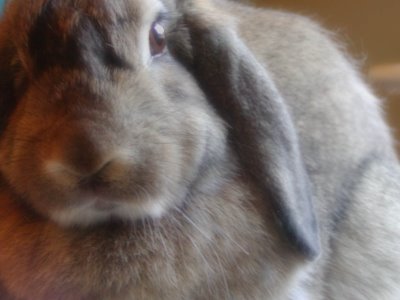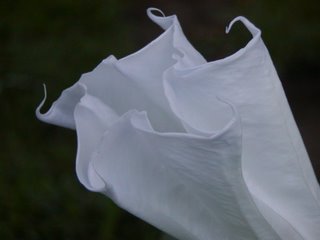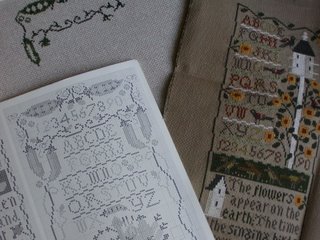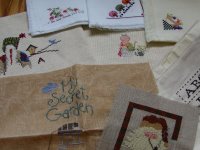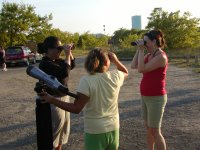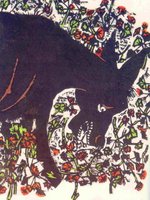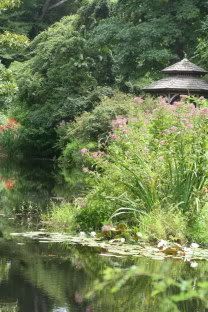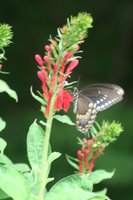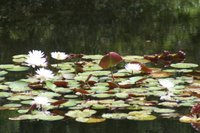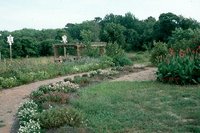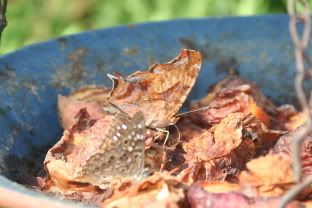 NY Ironweed (Vernonia noveboracensis) is another native that I planted because of its attractiveness to pollinators. It grows quietly in the back of the moist border with joe-pye and swamp milkweed and then blooms in late July or early August. This aster family relative is said to get its common name from the rusty color of the seedheads. The misty look to this pic is not an artistic touch; my camera fogged up last week when I brought it from the air-conditioned house out into the 100 degree heat to take this pic. I didn't have the wherewithal to stay out long enough in that heat, so decided I liked the effect.
NY Ironweed (Vernonia noveboracensis) is another native that I planted because of its attractiveness to pollinators. It grows quietly in the back of the moist border with joe-pye and swamp milkweed and then blooms in late July or early August. This aster family relative is said to get its common name from the rusty color of the seedheads. The misty look to this pic is not an artistic touch; my camera fogged up last week when I brought it from the air-conditioned house out into the 100 degree heat to take this pic. I didn't have the wherewithal to stay out long enough in that heat, so decided I liked the effect.All of the flowers in my garden have bloomed, save the goldenrods. The joe-pye is tattered and the milkweeds are ripening seedpods.

I've been watching these milkweed bugs for a few weeks, waiting for them to get big enough to take a pic. When I first noticed them I thought they were aphids, but with each day they are coming to look more like their adult form. These bugs feed on the tissues and seeds of the milkweed plant, and it's thought that they congregate in numbers like this to increase the benefit of their warning coloration to possible predators.
 I inadvertantly soaked this little baby a few times before I learned to check beneath the geraniums before watering them. He was convinced that he was so small and so brown that I wouldn't be able to see him under there. Mother Nature's camouflage at work!
I inadvertantly soaked this little baby a few times before I learned to check beneath the geraniums before watering them. He was convinced that he was so small and so brown that I wouldn't be able to see him under there. Mother Nature's camouflage at work!
 Monarchs are the most numerous butterflies in the garden this year, I've only spotted a few swallowtails and not even very many skippers. I spend a little time each day searching for eggs or caterpillars, but still have found none.
Monarchs are the most numerous butterflies in the garden this year, I've only spotted a few swallowtails and not even very many skippers. I spend a little time each day searching for eggs or caterpillars, but still have found none.

Today's attempt at a decent hummingbird pic. I envy those of you who can manage it. I'm glad to finally be seeing them in the garden, and love to watch them chase one another around! They've been visiting the sugar-water feeders, but also the salvias and the little flowering maple trees.
 Delicate branches
Delicate branches The time and patience needed to train a tree in miniature form to look natural and mature is, perhaps, the foremost challenge of this horticultural practice.
The time and patience needed to train a tree in miniature form to look natural and mature is, perhaps, the foremost challenge of this horticultural practice.







